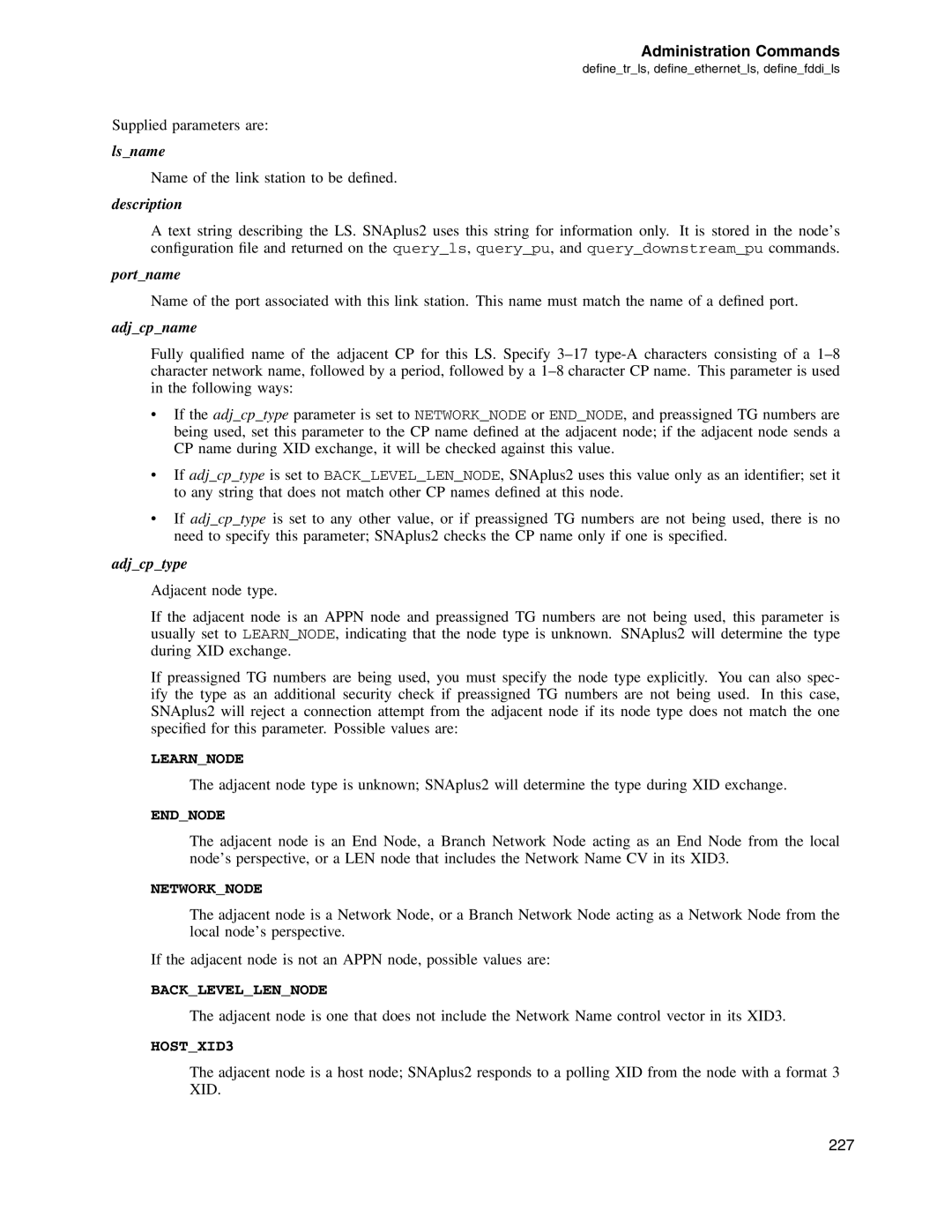Administration Commands
define_tr_ls, define_ethernet_ls, define_fddi_ls
Supplied parameters are:
ls_name
Name of the link station to be defined.
description
A text string describing the LS. SNAplus2 uses this string for information only. It is stored in the node’s configuration file and returned on the query_ls, query_pu, and query_downstream_pu commands.
port_name
Name of the port associated with this link station. This name must match the name of a defined port.
adj_cp_name
Fully qualified name of the adjacent CP for this LS. Specify
•If the adj_cp_type parameter is set to NETWORK_NODE or END_NODE, and preassigned TG numbers are being used, set this parameter to the CP name defined at the adjacent node; if the adjacent node sends a CP name during XID exchange, it will be checked against this value.
•If adj_cp_type is set to BACK_LEVEL_LEN_NODE, SNAplus2 uses this value only as an identifier; set it to any string that does not match other CP names defined at this node.
•If adj_cp_type is set to any other value, or if preassigned TG numbers are not being used, there is no need to specify this parameter; SNAplus2 checks the CP name only if one is specified.
adj_cp_type
Adjacent node type.
If the adjacent node is an APPN node and preassigned TG numbers are not being used, this parameter is usually set to LEARN_NODE, indicating that the node type is unknown. SNAplus2 will determine the type during XID exchange.
If preassigned TG numbers are being used, you must specify the node type explicitly. You can also spec- ify the type as an additional security check if preassigned TG numbers are not being used. In this case, SNAplus2 will reject a connection attempt from the adjacent node if its node type does not match the one specified for this parameter. Possible values are:
LEARN_NODE
The adjacent node type is unknown; SNAplus2 will determine the type during XID exchange.
END_NODE
The adjacent node is an End Node, a Branch Network Node acting as an End Node from the local node’s perspective, or a LEN node that includes the Network Name CV in its XID3.
NETWORK_NODE
The adjacent node is a Network Node, or a Branch Network Node acting as a Network Node from the local node’s perspective.
If the adjacent node is not an APPN node, possible values are:
BACK_LEVEL_LEN_NODE
The adjacent node is one that does not include the Network Name control vector in its XID3.
HOST_XID3
The adjacent node is a host node; SNAplus2 responds to a polling XID from the node with a format 3 XID.
